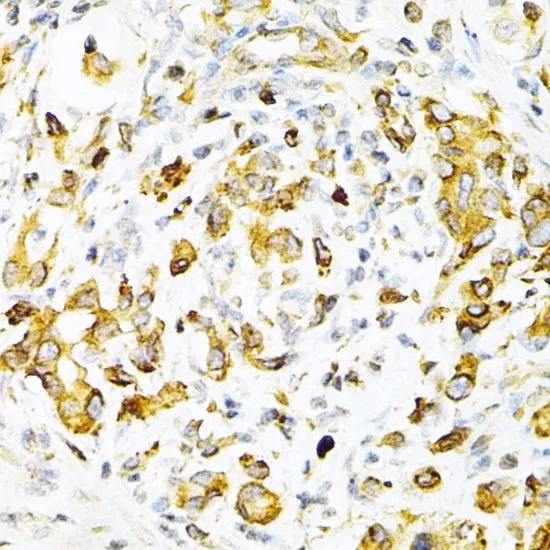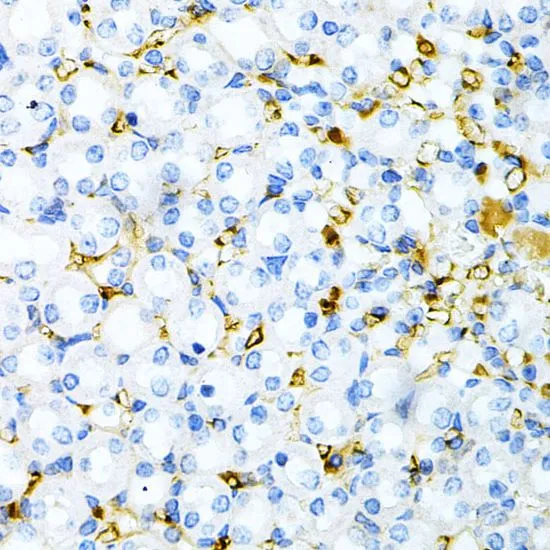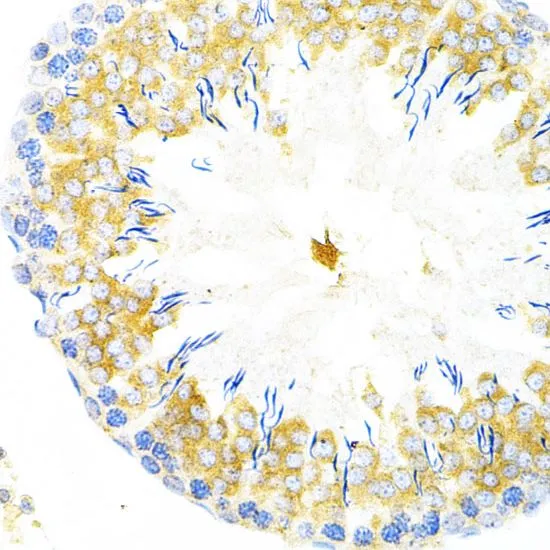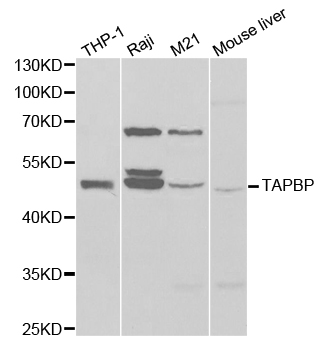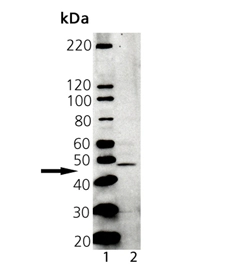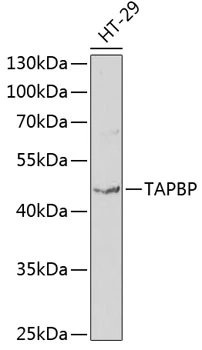
WB analysis of HT-29 cell lysate using GTX16401 Tapasin antibody. Dilution : 1:1000 Loading : 25microg per lane
Tapasin antibody
GTX16401
ApplicationsWestern Blot, ImmunoHistoChemistry, ImmunoHistoChemistry Paraffin
Product group Antibodies
TargetTAPBP
Overview
- SupplierGeneTex
- Product NameTapasin antibody
- Delivery Days Customer7
- Application Supplier NoteWB: 1:500 - 1:2000. IHC-P: 1:50 - 1:100. *Optimal dilutions/concentrations should be determined by the researcher.Not tested in other applications.
- ApplicationsWestern Blot, ImmunoHistoChemistry, ImmunoHistoChemistry Paraffin
- CertificationResearch Use Only
- ClonalityPolyclonal
- ConjugateUnconjugated
- Gene ID6892
- Target nameTAPBP
- Target descriptionTAP binding protein
- Target synonymsNGS17; NGS-17; TAP binding protein (tapasin); TAPA; tapasin; TAP-associated protein; TPN; TPSN
- HostRabbit
- IsotypeIgG
- Protein IDO15533
- Protein NameTapasin
- Scientific DescriptionThis gene encodes a transmembrane glycoprotein which mediates interaction between newly assembled major histocompatibility complex (MHC) class I molecules and the transporter associated with antigen processing (TAP), which is required for the transport of antigenic peptides across the endoplasmic reticulum membrane. This interaction is essential for optimal peptide loading on the MHC class I molecule. Up to four complexes of MHC class I and this protein may be bound to a single TAP molecule. This protein contains a C-terminal double-lysine motif (KKKAE) known to maintain membrane proteins in the endoplasmic reticulum. This gene lies within the major histocompatibility complex on chromosome 6. Alternative splicing results in three transcript variants encoding different isoforms. [provided by RefSeq, Jul 2008]
- Storage Instruction-20°C or -80°C,2°C to 8°C
- UNSPSC12352203

